12 Tomato Plant Pests to Watch Out for and How to Get Rid of Them Fast
To get rid of a tomato pest, you need to know what's eating the plant
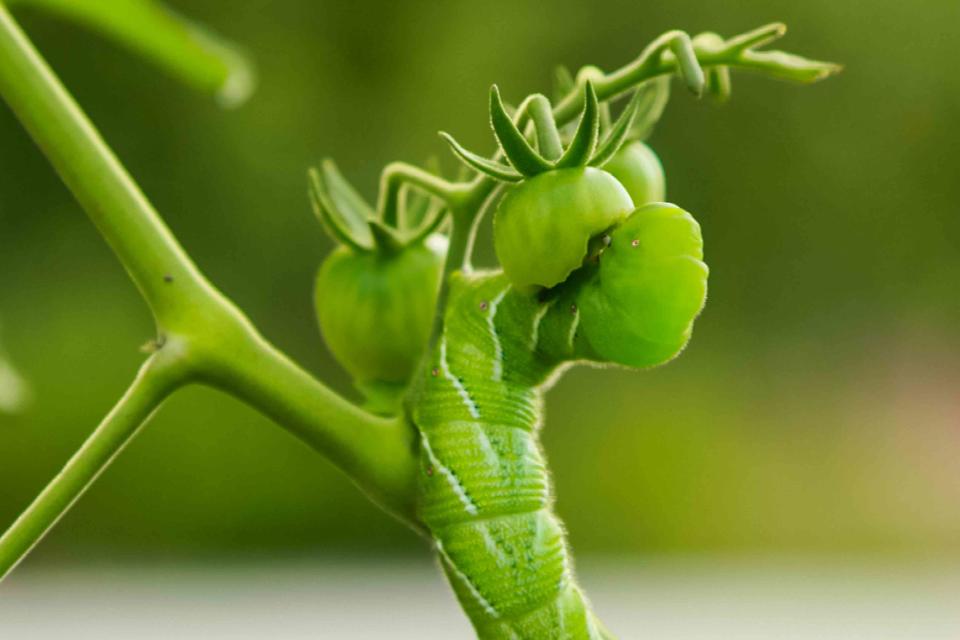
The Spruce / K. Dave
Pests love tomatoes just as much as humans do. Identifying tomato pests can be tricky, as some pests are so small that you’ll never see them, only the signs that they've eaten your tomatoes.
This list of 12 common pests is here to help. It includes a description of the insect, signs of it attacking the plant, and the time when this typically occurs, as well as the best pest control options.
Read on to learn more about tomato pests and how to prevent them from ruining your harvest.
Pests vs. Beneficial Insects
Not all insects on your plants are tomato pests. Beneficial insects such as predatory wasps, ladybugs, and lacewings are your allies when it comes to tomato pest control—they feed on the bad guys.
Before you proceed with pest control treatments, ensure what you're controlling is indeed a tomato pest. Pest control measures also depend on population numbers and the scope of the damage.
Want more gardening tips? Sign up for our free gardening newsletter for our best-growing tips, troubleshooting hacks, and more!
Most Common Tomato Pests
Cutworms
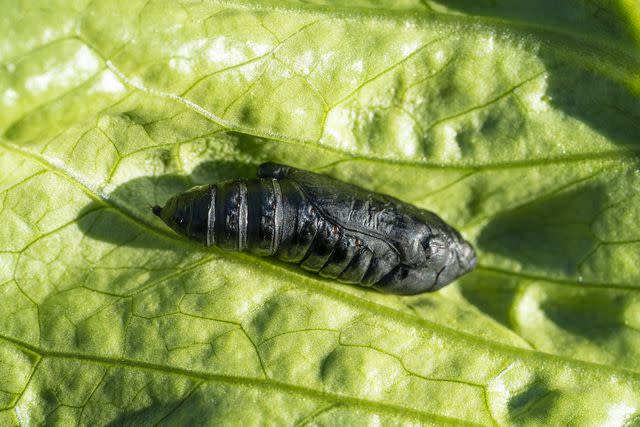
MEDITERRANEAN / Getty Images
Black cutworm larva (Agrotis ipsilon)Cutworms are the caterpillars of various moth species, and two in particular attack tomato plants: the variegated and black cutworms.
Signs of Damage: Cutworms got their name from their feeding method: they cut down young plants and eat their leaves. They only feed in the evening and at night—during the day, they hide in plant debris or the soil.
Control: In most cases, damage occurs on seedlings. If adult cutworms continue to be a problem in the summer, put up pheromone traps. Prevention consists of good weed control to deprive the caterpillars of their daytime hideouts.
Hornworms
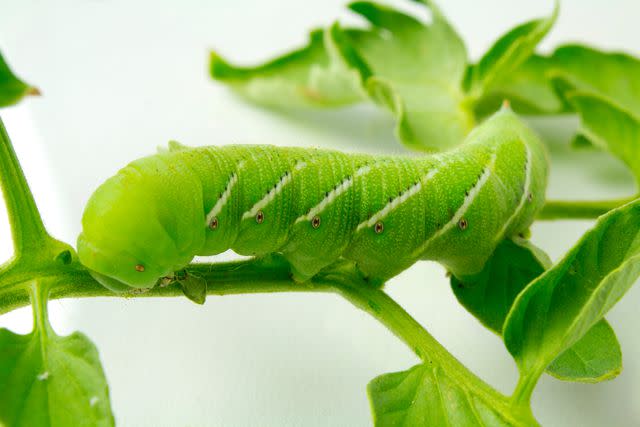
DPFishCo / Getty Images
Probably the most well-known tomato pest, hornworms are 3 to 4 inches long. They are blue-green with a characteristic horn on their second to last body segment and 7 to 8 diagonal white stripes along the sides of their bodies.
Signs of Damage: The caterpillars are voracious eaters, consuming a large amount of tomato leaves in a short time. They sometimes also eat green tomatoes. While the caterpillars are often difficult to spot as they blend in with the leaves, their dark green or black droppings (frass) are a telltale sign of their presence.
Control: They rarely appear in large numbers, which makes hand-picking a feasible option. Start checking your plants for the caterpillars, their feeding damage, and frass, and remove them while still small. Braconid wasps are beneficial insects that parasitize and kill hornworms.
Aphids
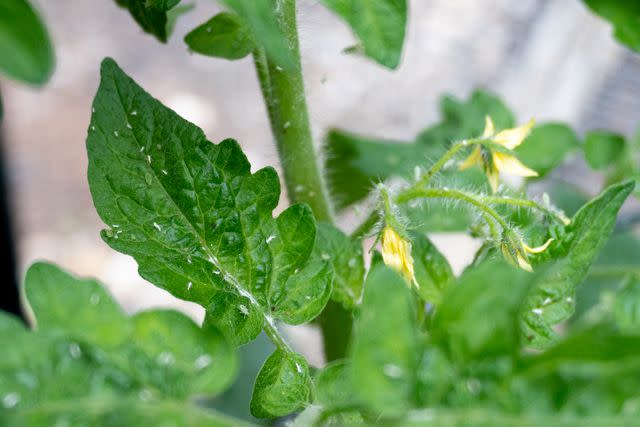
Liz W Grogan / Getty Images
These soft-bodied, light- to dark-green insects are only about the size of a pinhead. Because they are so small, hide on the underside of leaves, and reproduce rapidly, they often turn into infestation before they are noticed. They can be present on tomato plants during the entire growing season.
Signs of Damage: Aphids suck sap from leaves, which weakens the plant, and they produce the typical “honeydew,” a sticky liquid on which black fungus grows.
Control: Check the underside of leaves aphids and attract their natural enemies such as lacewings, ladybugs, and hoverflies to your garden. Insecticides should be the last resort as they indiscriminately kill also beneficial insects.
Spider Mites
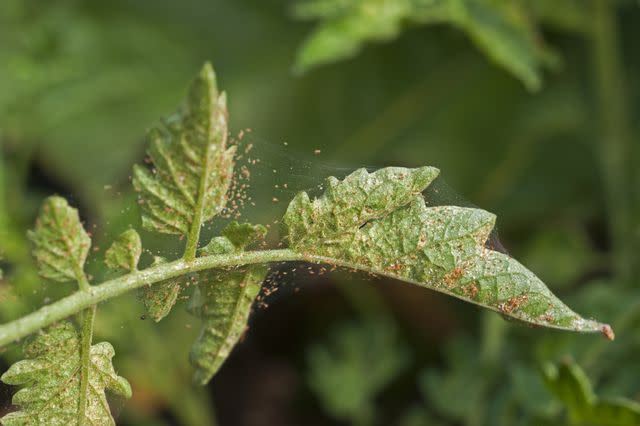
jess311 / Getty Images
Individual two-spotted spider mites are too small to detect with the naked eye. In hot, dry weather, their life cycle is as short as five to seven days and you’ll only notice that you have a problem when there is an infestation.
Signs of Damage: Spider mites suck the juices out of the cell walls of tomato leaves. This appears as a yellow discoloration or a mottled appearance as if the leaves had been blasted with sand. The leaves turn a bronze color, then brown.
Control: Check the underside of the tomato leaves, especially in hot, dry weather. A strong blast of water, including under the leaves, usually washes them off. To prevent spider mites, remove spider mite weed hosts such as chickweed from the area around your garden.
Tomato Fruit Worms
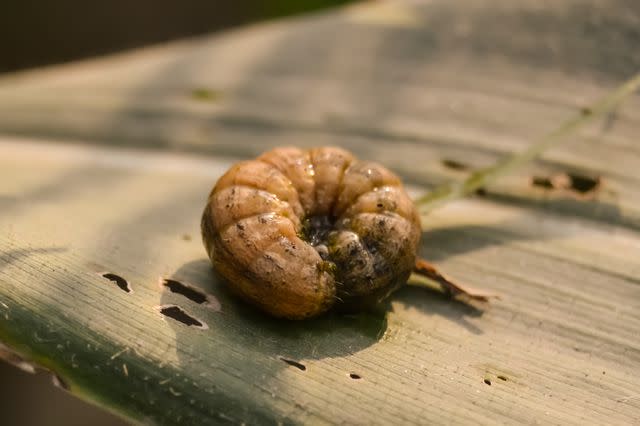
Anas Yousaf / Getty Images
The tomato fruit worm, also known as the corn earworm, is the caterpillar of a yellowish-brown moth. The caterpillars are mostly light green with tan, brown, or maroon splotches on their bodies. The female moths lay their eggs on tomato plants.
Signs of Damage: After the eggs hatch, the caterpillars feed mostly on the green tomatoes and only rarely on red tomatoes or leaves. They bore holes into the fruit, leaving behind frass that contaminates the tomatoes.
Control: Tomato fruit worm moths prefer to lay their eggs on corn so it’s a good idea to plant corn nearby as a trap plant. To get rid of the larvae, use Bacillus thuringiensis.
Flea Beetles
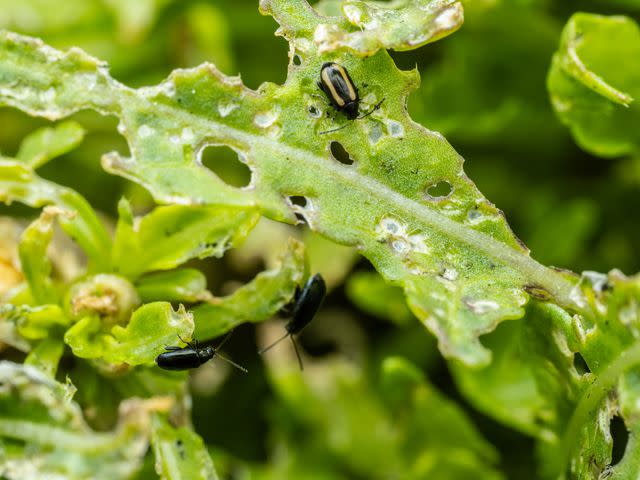
amriphoto / Getty Images
Adult flea beetles are very small, so you might not notice their large back legs—but the way they jump when disturbed gives them away. They overwinter in leaf litter and wooded areas and resurface in the spring.
Signs of Damage: Flea beetles feed on the leaves and stems of tomatoes, leaving irregularly shaped holes. Severe flea beetle damage results in wilted or stunted plants.
Control: Planting tomatoes as late as possible helps to avoid the most severe onslaught of flea beetles. Trap crops such as radishes are another way to divert flea beetles to other plants. Once tomato plants have grown into strong, tall plants, they usually withstand flea beetles, whose numbers diminish in the summer.
Thrips
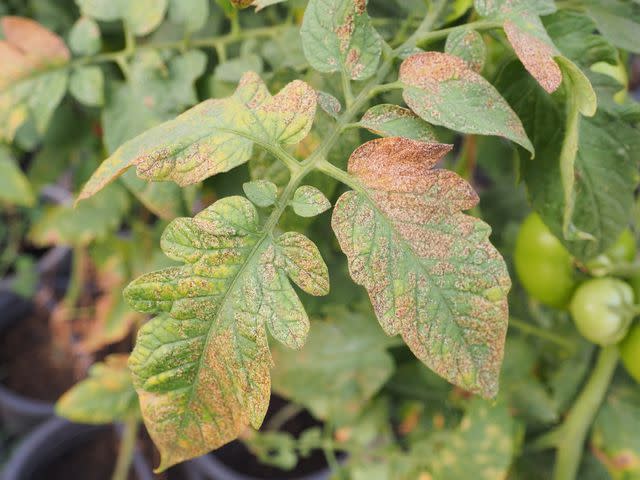
burapa / Getty Images
Tospovirus in tomato, transmitted by thripsWestern flower thrips are tiny, 1 mm long insects with a narrow body shape. The females are larger than the males and yellow to dark brown whereas the males are pale yellow with a narrower abdomen.
Signs of Damage: With their piercing-sucking mouthparts, Western flower thrips cause white scarring on tomato leaves, distorted growth, and sunken tissue on the underside of leaves. You might also notice small black spots, the frass from the feeding. Thrips also transmit the tomato spotted wilt virus to the plants, which is just as damaging as the feeding itself.
Control: Thrips are difficult to control with insecticides because they often feed deep in the flowers and buds where chemicals don’t reach them. If using pesticides, use a product with Spinosad as an active ingredient. To prevent infestations, keep the areas around tomato plants weeded, as thrips reproduce on weeds.
Leafminers

sebasb95 / Getty Images
Leafminer adults are small, black-and-yellow flies that appear mostly on tomatoes in late summer. In warm weather, their life cycle takes only two weeks and there are seven to ten generations per year.
Signs of Damage: The insects tunnel through the tomato leaf, leaving behind a serpentine-shaped track of dead white tissue. They also lay their eggs in leaves and leaf surfaces. Damaged leaves drop prematurely and the plant might lose all its leaves if the infestation is severe.
Control: Not spraying broad-spectrum insecticides is the best you can do to control leafminers, as their natural enemies, such as parasitic wasps, feed on the larvae, When purchasing tomato plants, inspect them for leafminer damage. Infested plants should be destroyed.
Colorado Potato Beetles
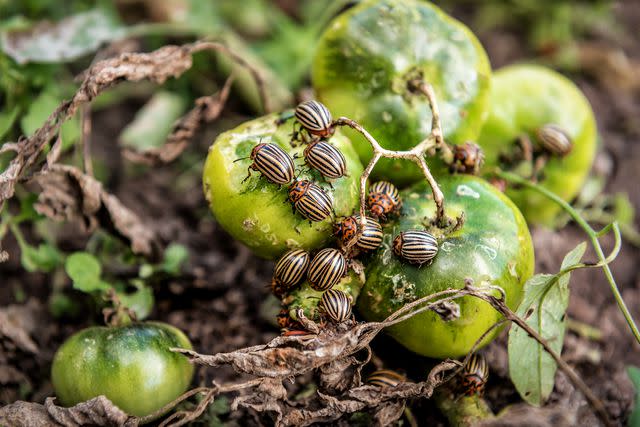
vovashevchuk / Getty Images
Although potatoes are their favorite food, Colorado potato beetles feed on any members of the nightshade family, including tomatoes. The larvae have orange-pink bodies with black heads and two rows of black spots along the sides of their bodies.
Signs of Damage: Both adults and larvae feed on tomato leaves, often defoliating the plant. In addition to signs of chewing, also look for dark frass on the foliage.
Control: Monitor the plants early, as seedlings are especially vulnerable, Small numbers can be hand-picked, and remove any egg masses. Treat serious infestations with an insecticide that contains Spinosad as an active ingredient.
Stink Bugs
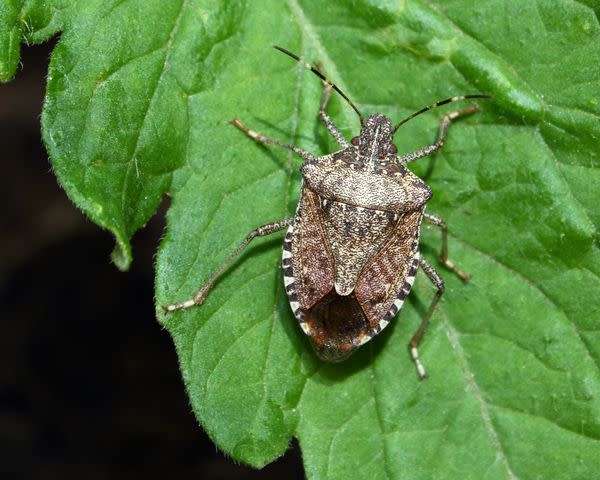
ibunt / Getty Images
Also dreaded indoor pests, stink bugs are easily identified by the inverted triangle on the back of their shield-shaped body. The ½- to 2/3-inch bugs are brown or green in color. They overwinter as adults on the ground under leaves, plant debris, and weed patches and reemerge in the spring,
Signs of Damage: Feeding damage appears as whitish areas with fuzzy borders. On ripe tomatoes, it looks like needle piercings or tiny dimples. The feeding also leads to hard, whitish, callous tissue beneath the skin.
Control: If stink bug infestations are common in your area, start checking tomatoes when they are about 1 inch in diameter, and handpick the bugs. To prevent them, practice thorough weed control to eliminate their overwintering locations. Because stink bugs move fast, spraying insecticides is not an efficient management method.
Whiteflies
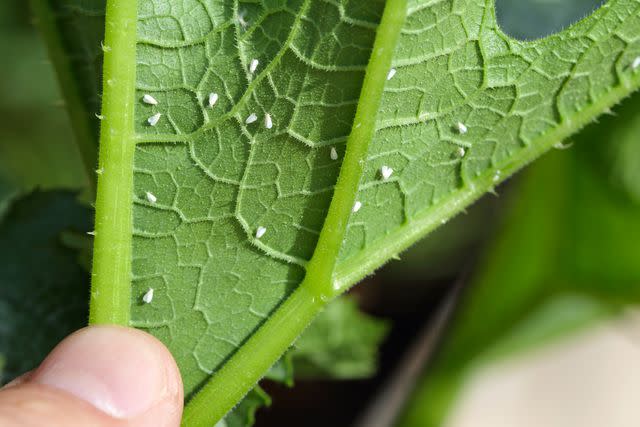
Tomasz Klejdysz / Getty Images
Silverleaf whitefly (Bemisia tabaci)The silverleaf whitefly is a 1/8-inch insect with a yellowish body. It does not survive freezing temperatures but overwinters in greenhouses and is often introduced to home gardens through transplants that were grown in warmer regions.
Signs of Damage: This pest only feeds on tomato fruit and injects a toxin into the fruit that causes irregular ripening. You might only notice the damage—green or yellow unripe longitudinal patterns that reach deep into the fruit—until the tomatoes look ripe on the outside and you cut them open.
Control: The preferred dwelling place of the insect where it also lays its eggs is the underside of the leaves. Wash the undersides of the leaves with a strong spray of the hose gets rid of both. Attracting natural enemies such as lacewings or parasitic wasps is another method of effective control.
Armyworms
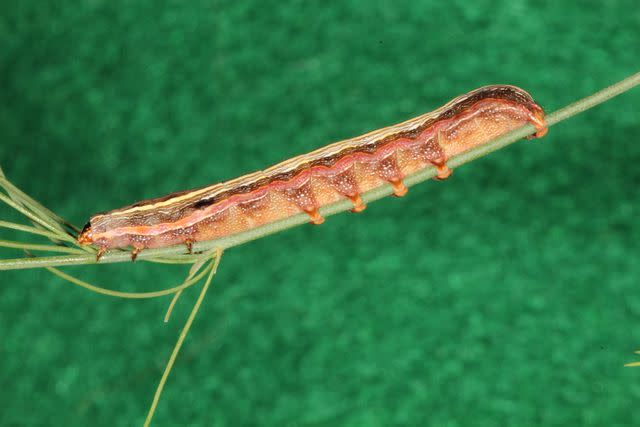
The caterpillars of the yellow-striped armyworm are pale gray to black with a yellow or cream-colored strip along the length of the body. The caterpillars overwinter in warm climates and move north in the summer.
Signs of Damage: The small larvae feed on tomato leaves for a short time and then attack the tomatoes. They puncture 1/8- to ¼-wide holes over the entire fruit and fruit cluster. It only takes one or two larvae to damage two to three tomato clusters.
Control: Start checking the leaves in June to detect and treat the caterpillars while they are still small and before they start eating the tomatoes. Apply Bacillus thuringiensis on plants where you spot the larvae.
Read the original article on The Spruce.

